
views
Inspecting the Crown and Tooth
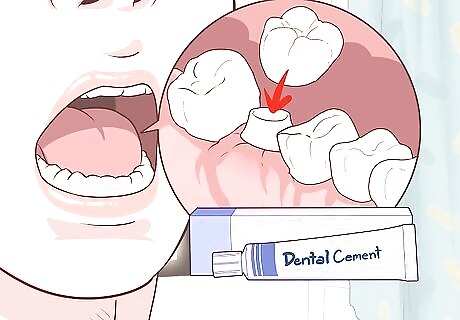
Get the crown out of your mouth. Carefully retrieve the crown from your mouth so that you do not drop it or swallow it. If you have already swallowed it, you are not in danger, but the crown will need to be replaced. If you have lost the crown, you can coat the tooth surface with an over-the-counter dental cement (available at many pharmacies) to temporarily seal the area until a dentist can repair it.
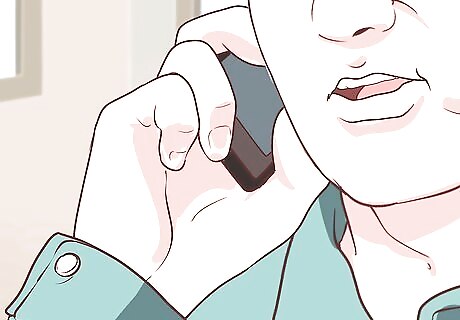
Call a dentist as soon as possible. Losing a crown is not a true dental emergency. Still, you should contact the dentist so the crown can be repaired. The dentist can tell you what to do and how to care for it until you can get it fixed. Your tooth will be weak, possibly sensitive, and at a greater risk of decay until the crown is fully prepared so do not delay in contacting your dentist for a solution.
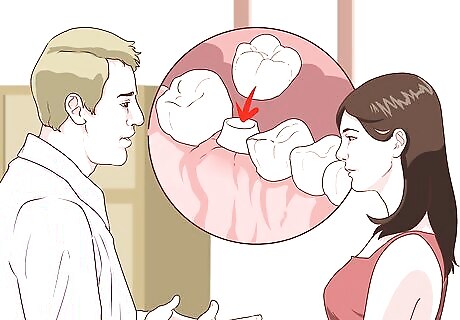
Inspect the tooth area and crown. If no pieces have chipped off of either the tooth or the crown, you should be able to set the crown temporarily back in place. Contact a dentist and do not attempt to reattach the crown if the crown is filled with hard material or a portion of your tooth, rather than mostly hollow. Your crown may be attached to a metal post, and it is hard to fit the sharp tip into the right place, especially if the crown is on a molar. Contact your dentist for the best guidance.
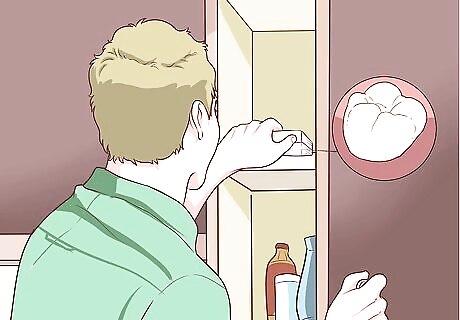
Be cautious until you can reattach the crown. Keep the crown in a secure place until you can reattach it, so that you don't lose it. Avoid chewing on tooth that lost the crown until you can reattach it. This will help prevent tooth decay and any further damage to the tooth.
Fitting the Crown in Place Temporarily

Clean the crown. Carefully pick any old cement, food, or other material off of the crown if you can, using a toothbrush, a toothpick, or dental floss, and rinse the crown with water. Try using a paperclip or a toothpick to remove excess cement from the crown. If you clean the crown and tooth over a sink, make sure to plug it first so that you don’t accidentally drop it down the drain.
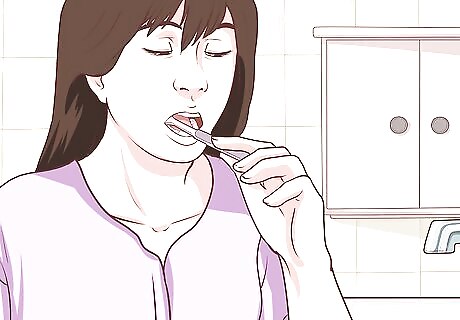
Clean the tooth. Using a toothbrush and floss, gently clean the tooth that has lost its crown. The tooth will likely be sensitive, which is normal. Floss on both sides of the tooth, as well.
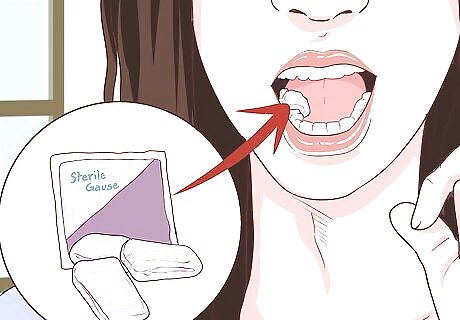
Dry the tooth and crown. Using sterile gauze, gently dry the crown and tooth area.
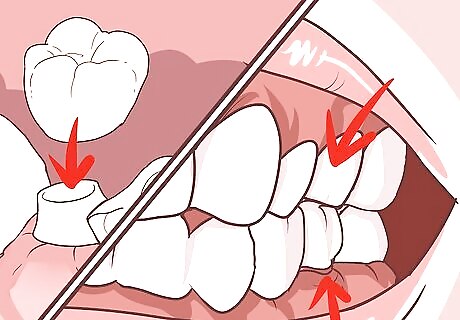
Try to fit the crown in place without any adhesive. Testing the crown with a dry fit will help you make sure that you can put it back in place. Set the crown in place and bite down very gently. The crown should not feel like it is sitting higher than your other teeth. If it does, it may need to be cleaned further. If the crown does not seem to fit right one way, turn it and try another way. It is designed to fit securely, so it may take some time to get it properly in place. If you cannot fit the crown in place without cement, do not try to fit it in with cement.
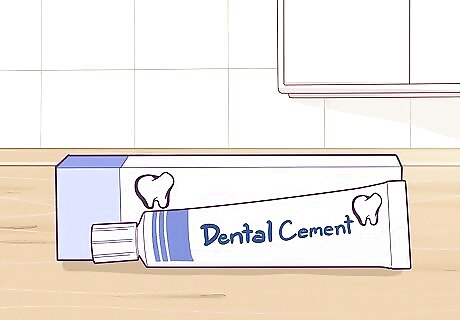
Choose an adhesive. If you are successfully able to set the crown in place in a dry fit, then you can try to adhere it to the underlying tooth. Dental cements are designed for the job and will secure the crown best, though other materials will work in a pinch. Choose an adhesive based on what is available to you. Use dental cement for a temporary fix. You can find this at most pharmacies or grocery stores. This is different than denture cream; the container of dental cement should be labeled as a fix for a crown or cap that has fallen off. Some cements have to be mixed, while others are pre-mixed. Follow directions carefully. You can also use temporary dental filling material. This is also widely available at pharmacies. Denture adhesive will also work in a pinch. If you can’t get denture cement, a loose slurry of flour and water can be used instead. Mix a small amount of flour and water together to make a smooth, loose paste. Try using sugar-free gum if you just need to hold the crown in place for a short time. Do not use superglue or household adhesives to hold the crown in place. While many people are tempted to do this, it can irritate your tissue and tooth. Doing this is worse than going without a crown for a little while.

Apply your chosen adhesive to the crown and carefully set it in place on your tooth. Just a small dab of adhesive spread on the interior surface of the crown should be sufficient. Use a mirror to help you see where to place the crown, especially if the tooth is hard to reach. You can also ask someone else for assistance. Be patient—it can sometimes take a few tries to ensure that the crown fits well.
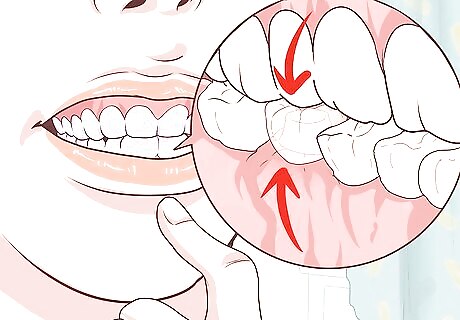
Tap your teeth together. Gently bite down to test the position and fit of the crown, and to get it exactly into place. Before fitting the crown, dry the area with gauze or a towel to clean any saliva in that area. You want the area to be totally dry. Depending on the directions provided with the particular cement you are using, you may need to clamp down on the crown for a few minutes, then carefully remove any excess cement from around the tooth or gum.

Floss carefully to remove any excess cement between the teeth. Don’t pull up on the floss to get it out—instead, slide it between the teeth while biting down gently. This will stop you from accidentally removing the crown again.
Waiting to See a Dentist

Schedule an appointment to see your dentist. Although the temporary crown may hold for a few days or even weeks in the best-case scenario, you will need to see a dentist as soon as possible for a more permanent reattachment or replacement.
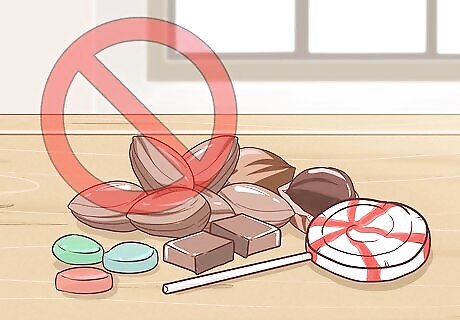
Eat and drink with caution until the crown is repaired by a dentist. Avoid eating on the side of the mouth with the crown. Remember that the crown is only held temporarily in place, so avoid any excessively hard or chewy foods until you can see a dentist.
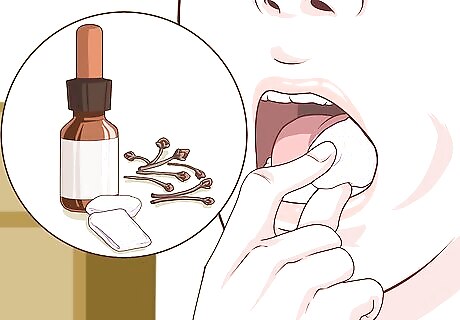
Deal with any pain. If your tooth or jaw is sensitive or in pain because of the temporary crown fix, dab clove oil onto a cotton swab and gently apply to the gum and tooth area. This will numb the site. You can often find clove oil in pharmacies or in the spice aisle of supermarkets.

















Comments
0 comment